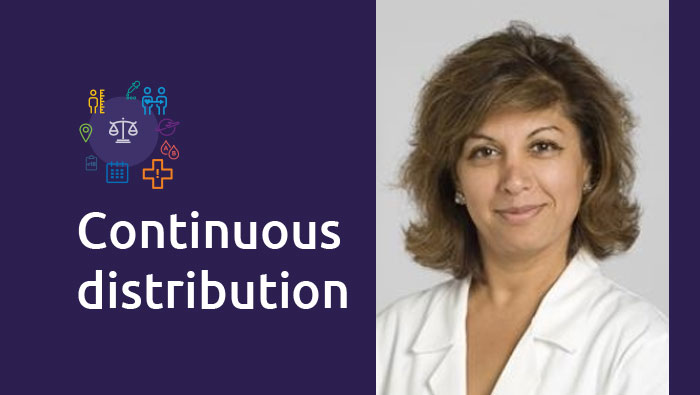A message from Marie Budev, DO, MPH, FCCP, OPTN Lung Committee Chair
Members of the lung transplant community,
As we approach the end of 2023, I want to recognize the great work you all have done to save lives this year and to talk about a new tool coming in 2024.
Paving the way
Earlier this year, our lung transplant community was the first to take a bold step towards the future of organ allocation by adopting the continuous distribution framework. Monitoring data from the first six months of continuous distribution has shown many positive outcomes including an increase in lung transplants, a decrease in the number of patients removed from the waitlist due to death or being too sick for transplant, and no negative impact on lung utilization rates.
Big changes like continuous distribution are never simple, but under this new framework, more people are getting a chance at life thanks to a lifesaving transplant. If you’d like to gain more insights into the impacts of the policy, you can now access a new lung allocation monitor dashboard on the OPTN site. The dashboard is a useful tool to provide your transplant center allocation details, for example by geography and many other characteristics.
In a few weeks, we’ll gain another tool to help get the right organs to the right patients at the right time.
Introducing Offer Filters
You may already have heard of Offer Filters, which have been available to kidney programs since 2022. Early next year, the first phase of the Lung Offer Filters tool will be coming to lung programs to help transplant teams make the best decisions for their patients. By filtering offers at the program level based on criteria such as donor type (ie DCD or BDD), distance and donor age, the tool has the potential to save valuable time and to help make sure that organs find their way to programs that will accept them for their patients.
Increasing efficiency
Another key advantage we’ve been hearing from kidney programs is that by using Offer Filters the number of offers can be reduced, making the offer review process more efficient for a program. When transplant teams filter out offers they won’t accept, they can devote more attention to determining if the organs they are being offered are right for their patients.
Offer Filters again mean the offer review process can be made more efficient by reducing the number of offers that a center would not accept or declining organ offers that don’t meet criteria for their program. Colleagues at organ procurement organizations, who are sending out fewer organ offer notifications, benefit as well.
But the most important benefit is that more patients are receiving transplants. Nearly two years after the launch of Offer Filters, the total number of kidney transplants performed is higher than ever before and we hope to see that duplicated for lung transplants.
From filters to insights
Even without activating a single filter, Offer Filters can provide helpful insights to your program. With the Offer Filters Explorer tool, users can view recommended filters, custom created at a program level from data based on the past year of lung offer acceptances. The tool can also show which offers your program declined are being accepted by other transplant programs.
Your use of Offer Filters will also help shape how it improves. The four filters available at launch are part of the first phase of the tool, and we want your feedback for what filters will be added in the future.
Coming soon
The Offer Filters tool will launch for lung programs in early 2024 to promote efficiency in allocation. Shortly after launch, the OPTN will hold a webinar to provide more details about the tool and how it works. We look forward to your feedback on Offer Filters and the other improvements and tools that will help you advance our important lifesaving work.
Dr. Marie Budev
Medical Director, Lung/Heart-Lung Transplant, Cleveland Clinic
OPTN Lung Committee Chair

